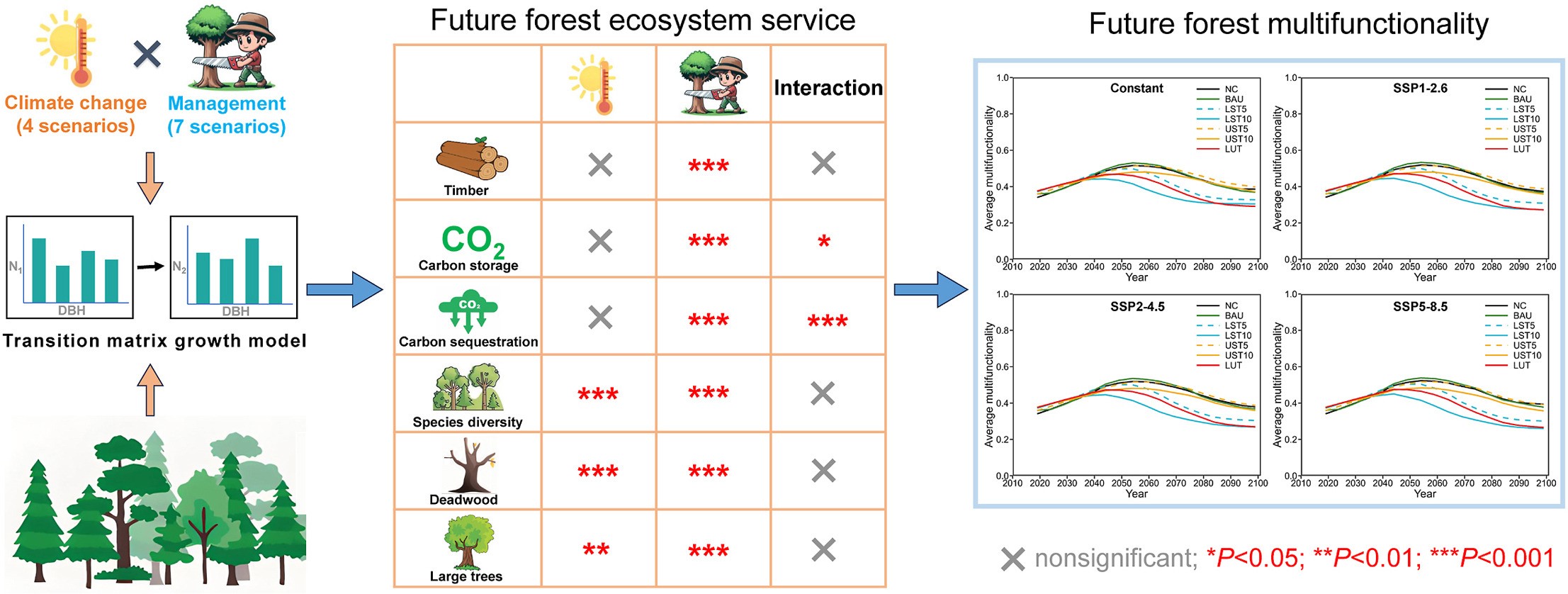Simulated forest multifunctionality under climate change and forest management
Published 12 October, 2024
The ecological, economic, social and cultural values of forests have gained increasing recognition among the public. Traditionally focused on timber production, forest management objectives have shifted toward enhancing ecosystem multifunctionality. Forest ecosystem service multifunctionality refers to a forest's ability to simultaneously provide multiple services for human well-being.
In a recent study published in the KeAi journal Forest Ecosystems, researchers in China applied a transition matrix growth model to simulate the effects of various management strategies on forest ecosystem services and multifunctionality in the context of climate change. Conducted in Jilin Province, northeastern China, the study incorporated climate change factors to reveal how appropriate management can enhance forest multifunctionality across all climate scenarios.
"Transition matrix growth models are widely employed as powerful tools in forestry due to their simple structure and ease of application, enabling long-term predictions for forests with complex structures, " explains Xue Du, first author of the study. “However, they have not previously been used to predict and simulate forest multifunctionality.”
Climate change and forest management are two crucial factors affecting forest multifunctionality. Simulating the effects of different management and climate scenarios on forest ecosystem services is essential for maximizing the multifunctionality of forests.
The team’s findings highlighted the significant impact of forest management on ecosystem services, which outweighed the effects of climate scenarios alone.
“No single management scenario maximized all forest ecosystem services,” says Du. “Nonetheless, an upper-story thinning management strategy with a 5% intensity emerged as the most effective for forest multifunctionality, surpassing the lowest values by more than 20% across all climate scenarios for natural mixed forests.”
According to corresponding author Xiangdong Lei, ecosystem services and multifunctionality can be enhanced through appropriate management measures amidst a changing climate.
“Our study underscores the potential of transition matrix growth models as decision support tools,” says Lei. “We aim to provide recommendations for long-term strategies for multifunctional forest management in light of future climate change.”

Contact author details: Xiangdong Lei, Institute of Forest Resource Information Techniques, Chinese Academy of Forestry, Beijing 100091, China,E-mail: xdlei@ifrit.ac.cn
Funder: This research was funded by the National Key R&D Program of China (Grant No. 2022YFD2200500) and the Forestry Public Welfare Scientific Research Project (Grant No. 201504303).
Conflict of interest: The authors declare that they have no known competing financial interests or personal relationships that could have appeared to influence the work reported in this paper.
See the article: Du, X., Lei, X.D., He, X., Lan, J., Guo, H., Xu. Q.G., 2024, Ecosystem service multifunctionality of mixed conifer-broad-leaved forests under climate change and forest management based on matrix growth modelling. Forest Ecosystems. 11, 100231. https://doi.org/10.1016/j.fecs.2024.100231